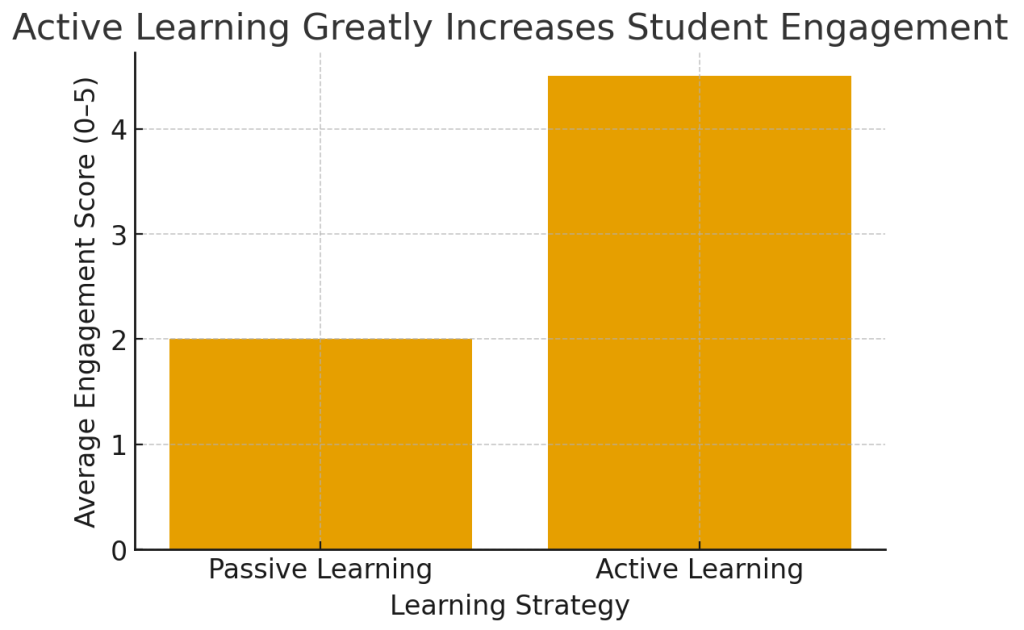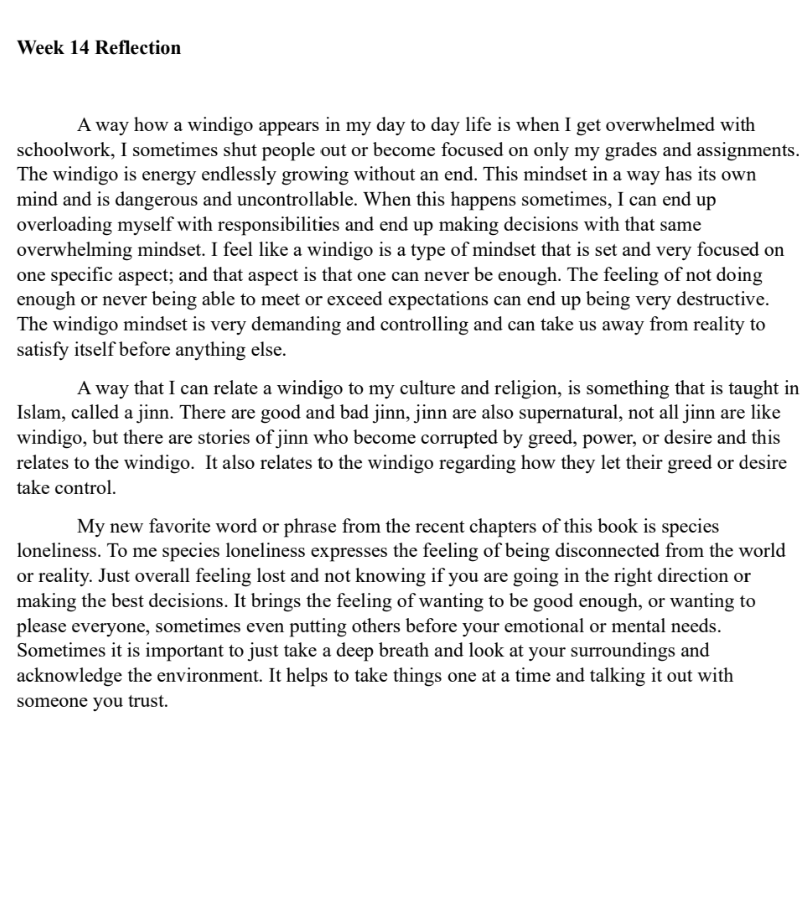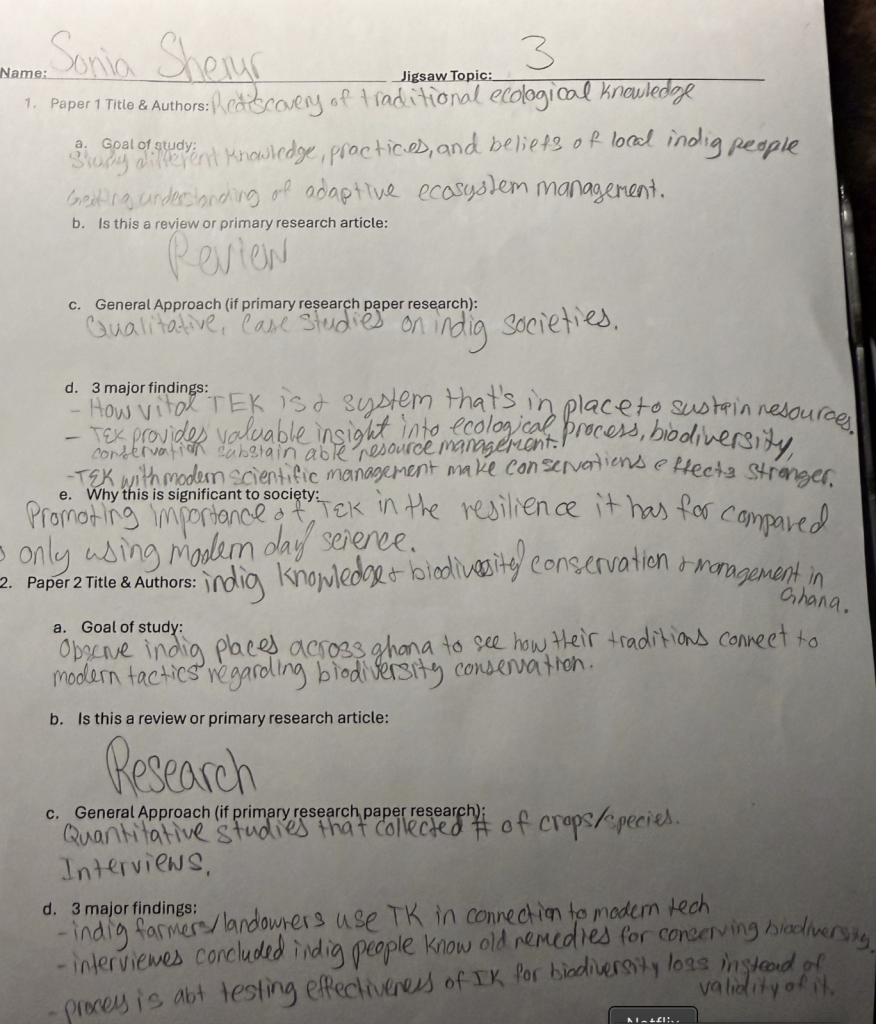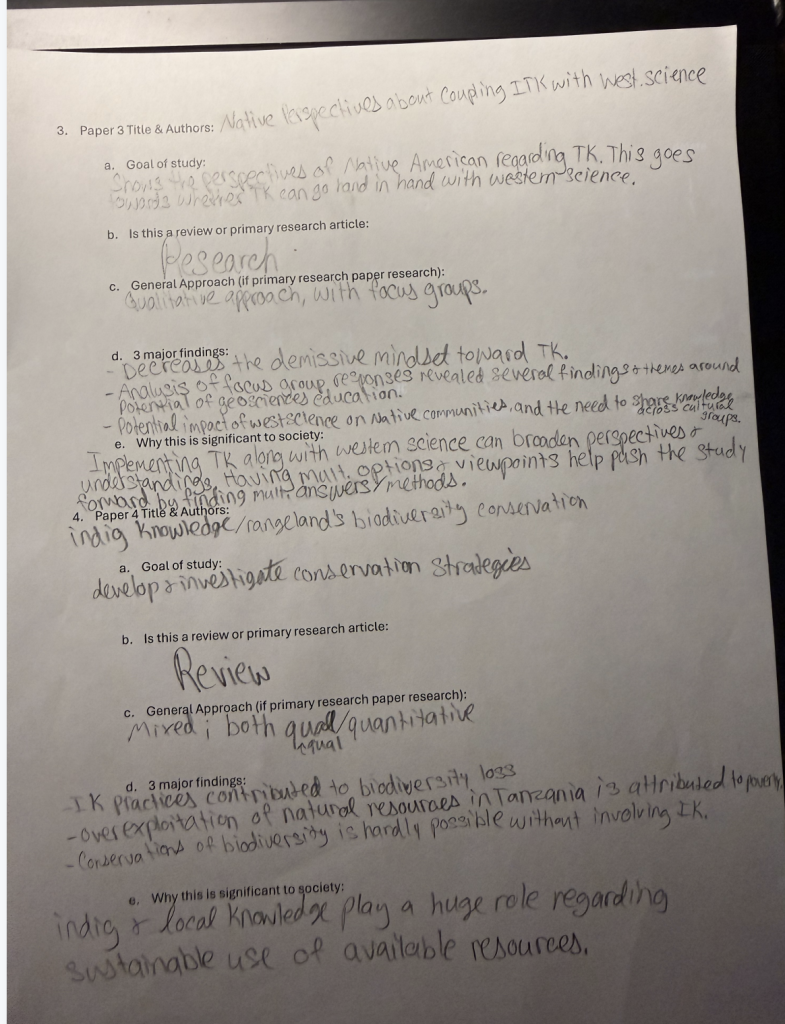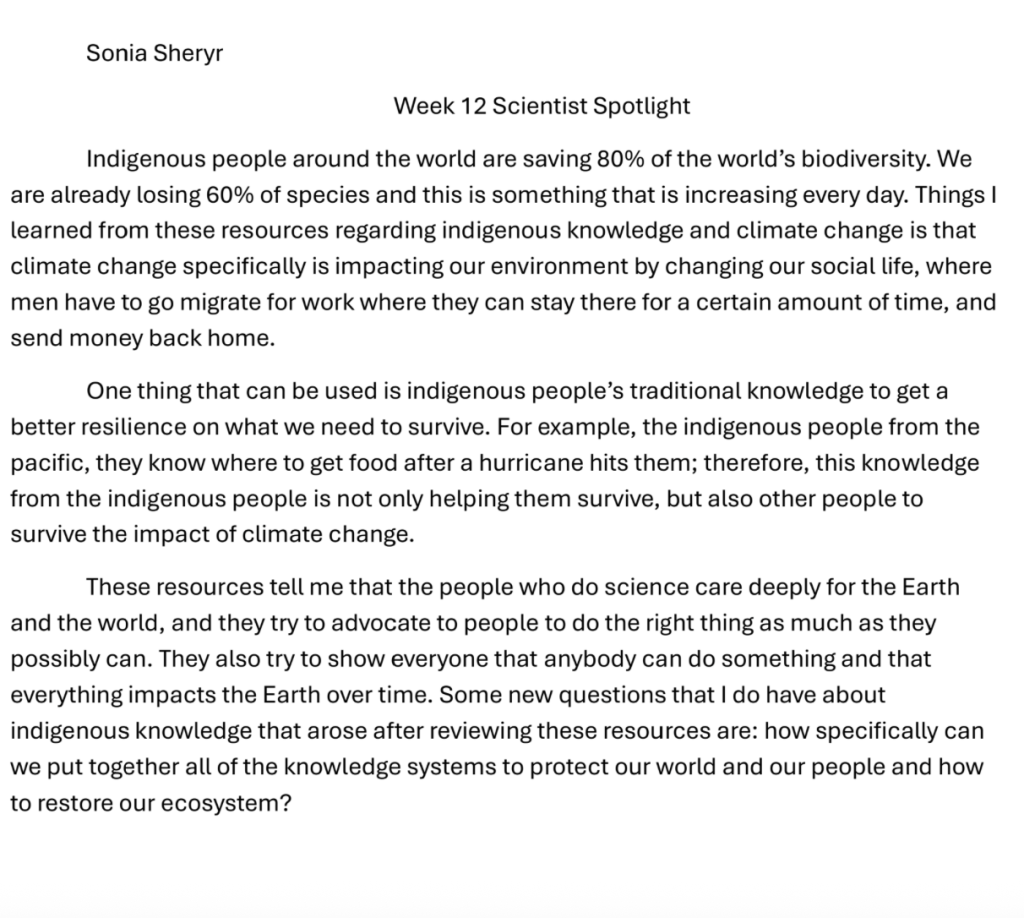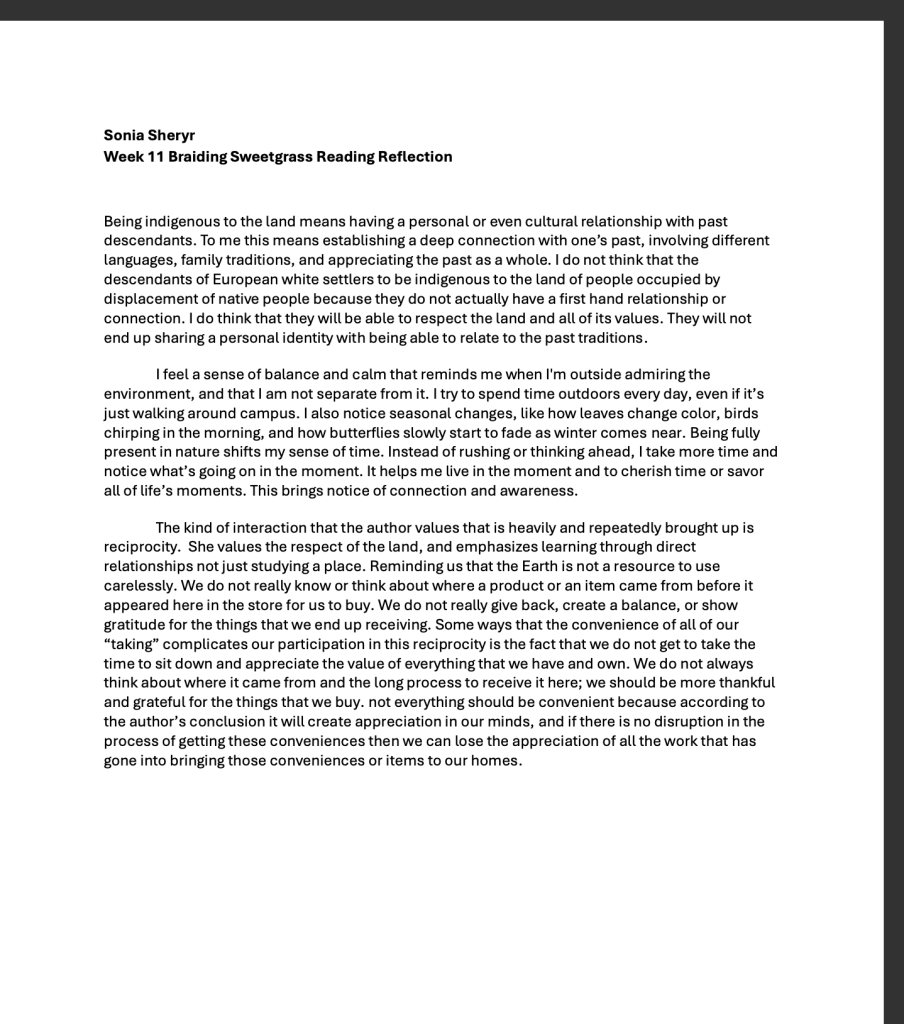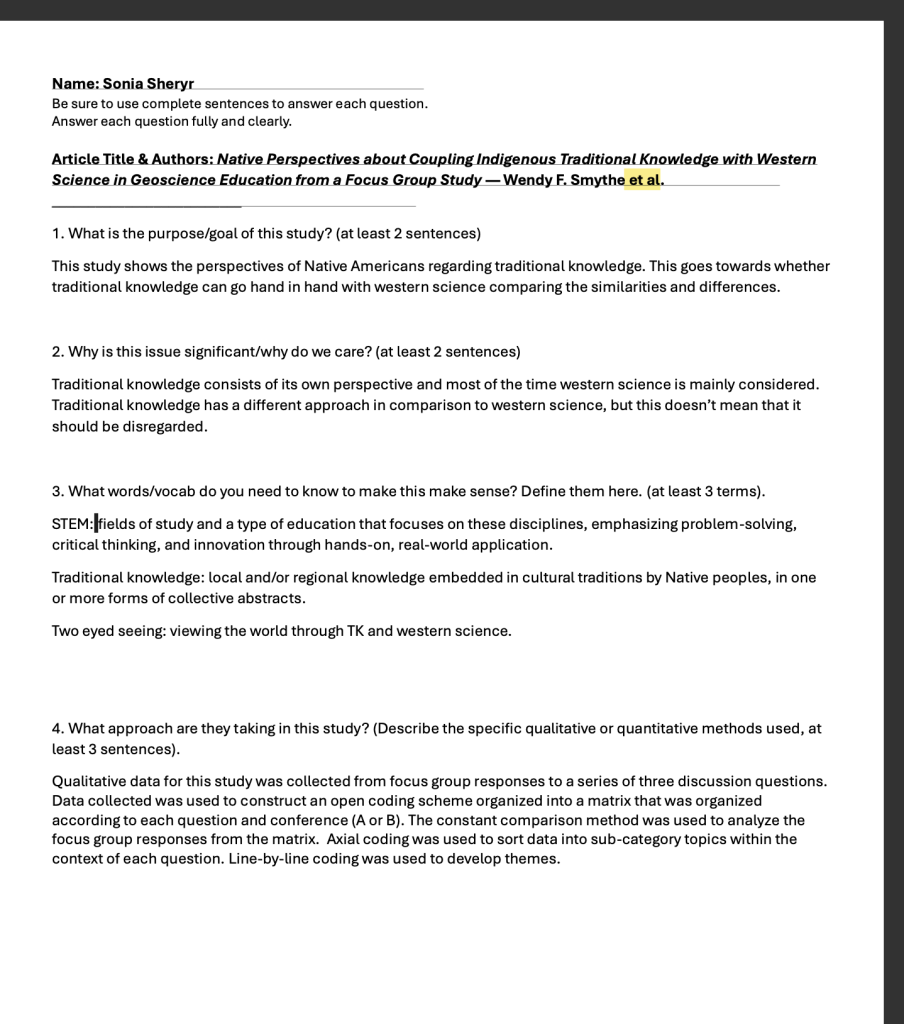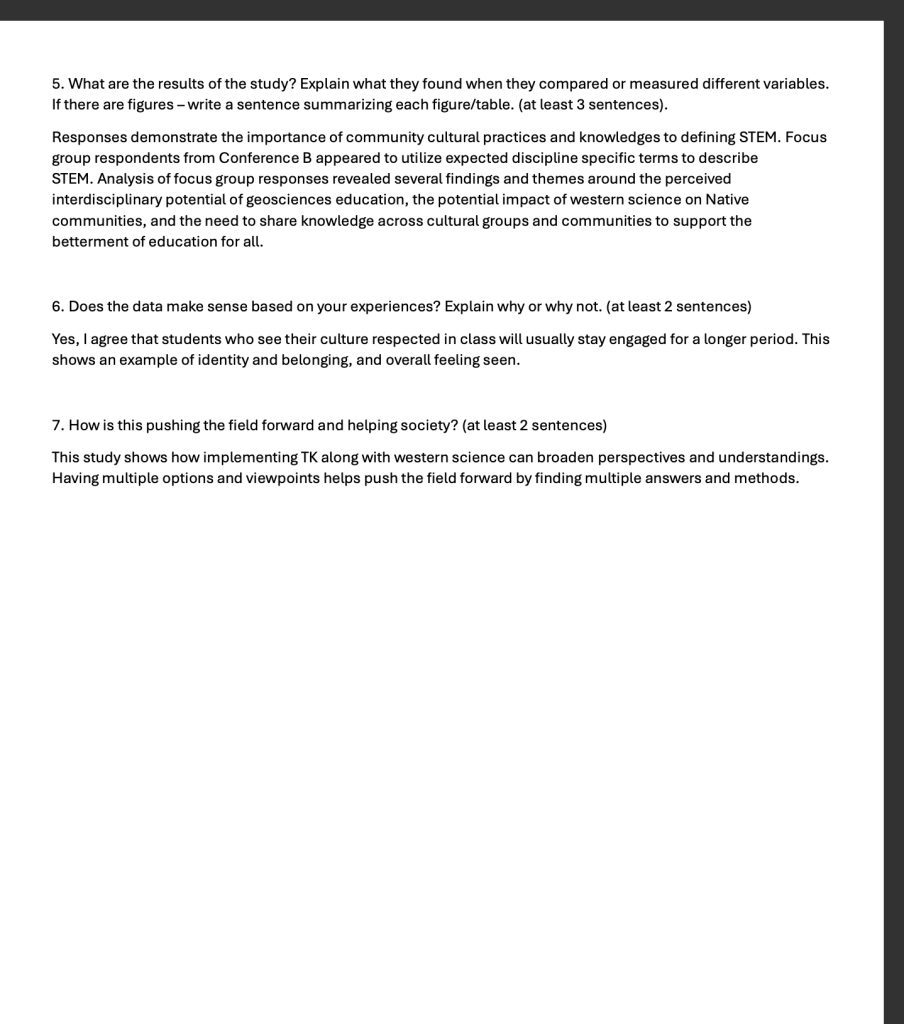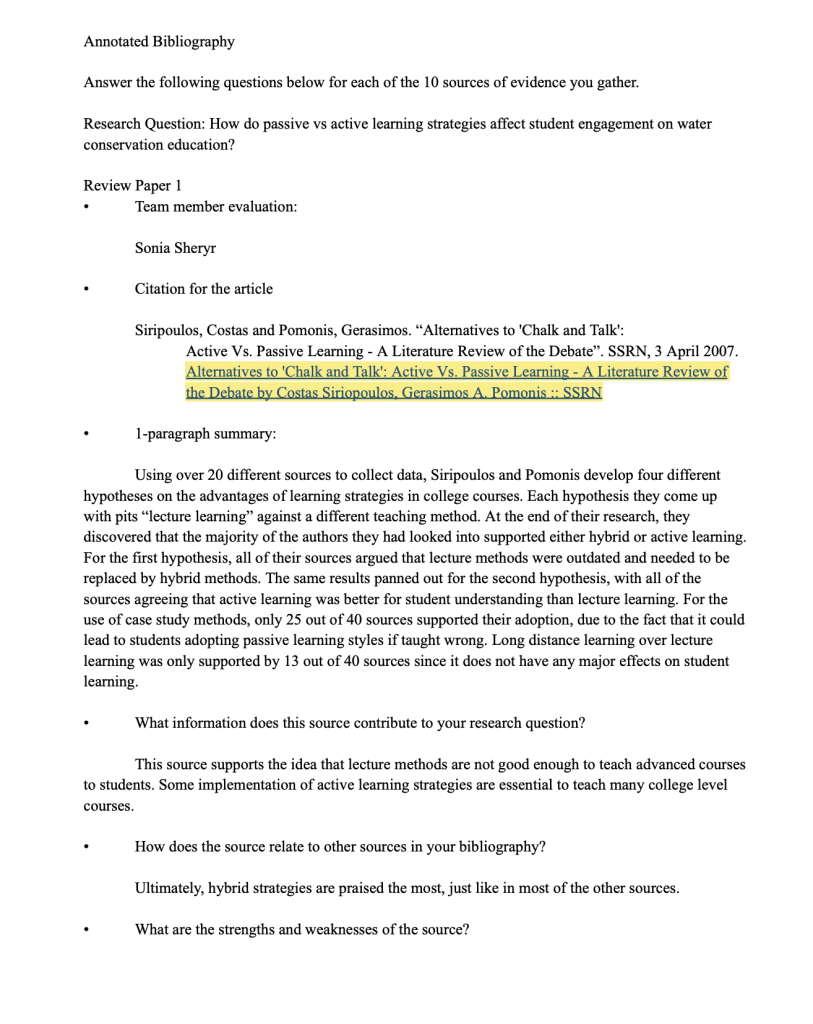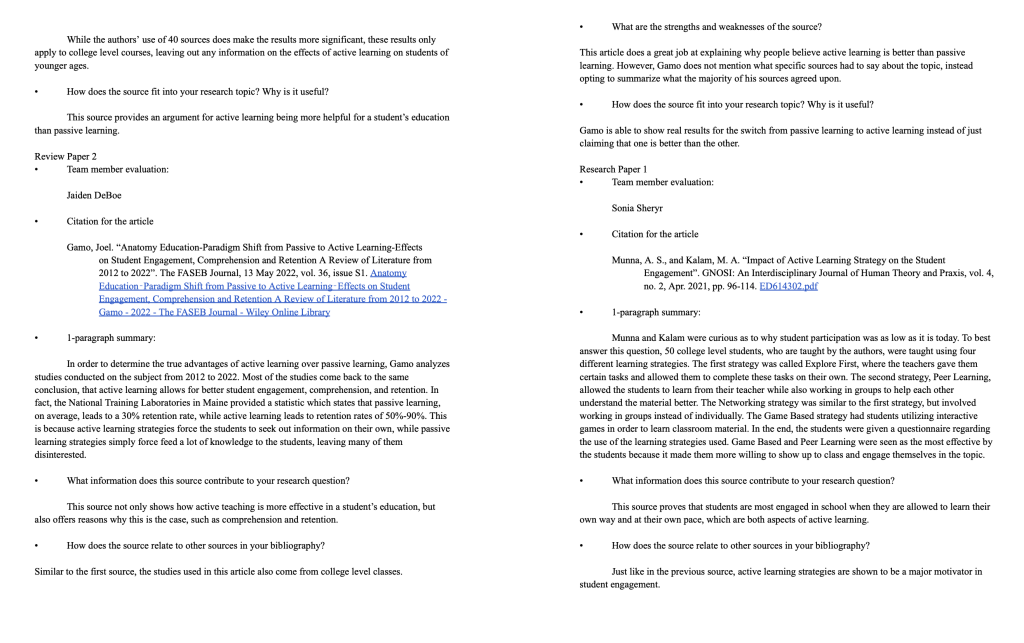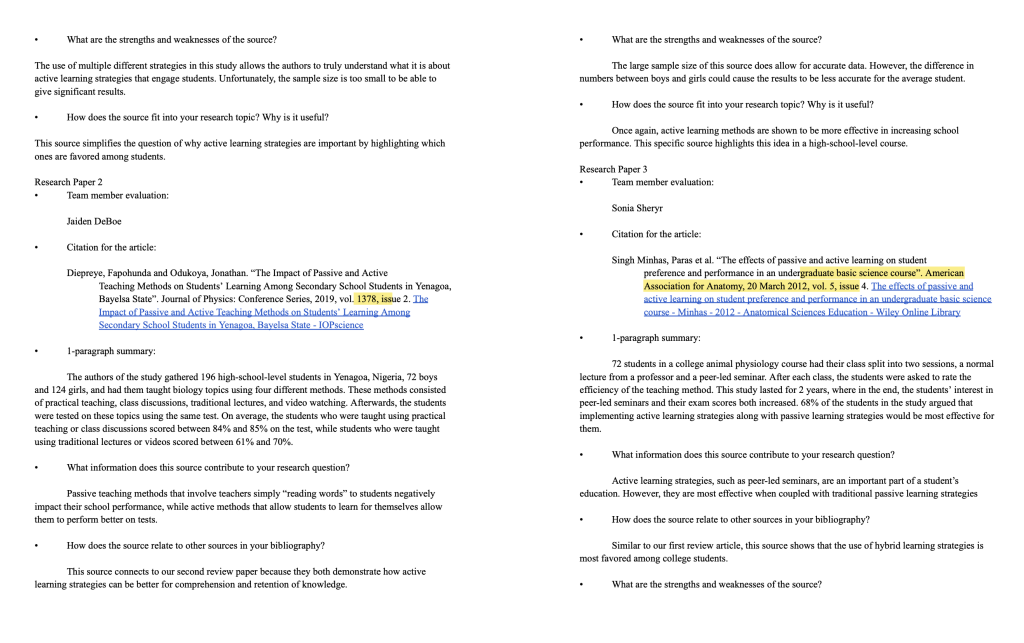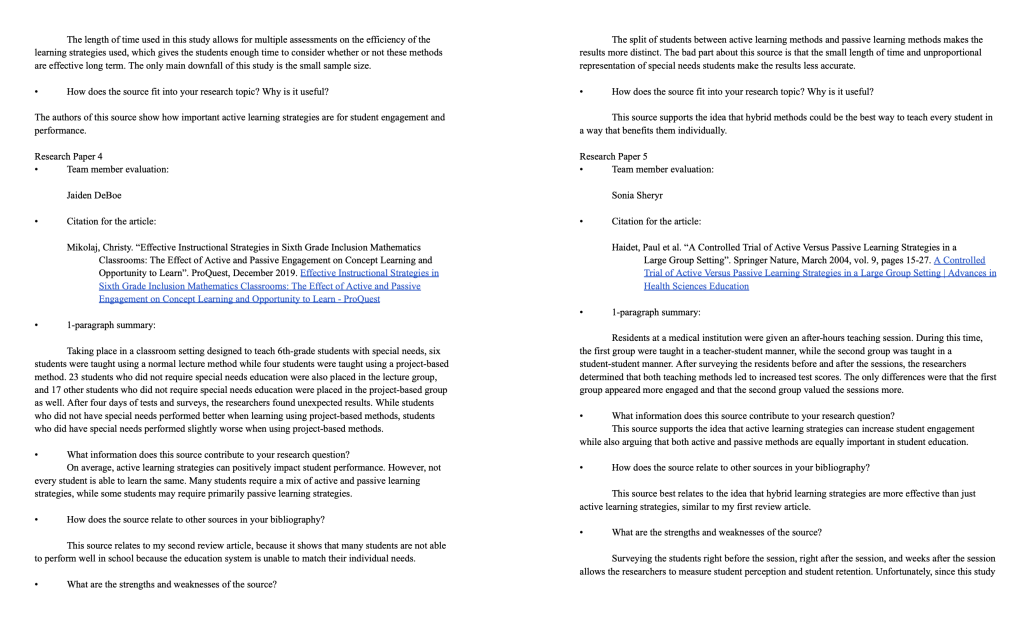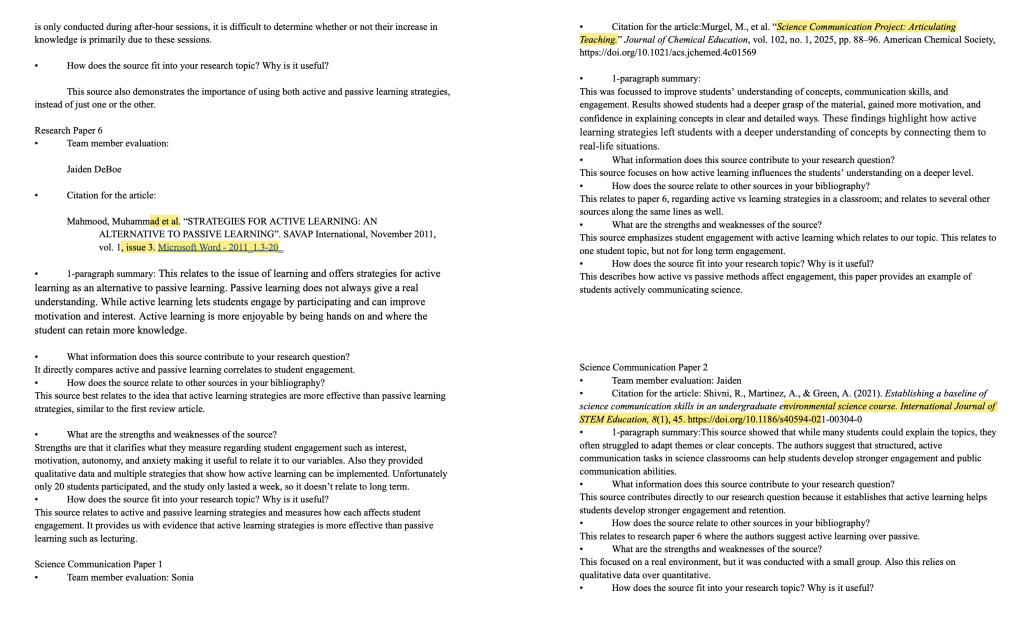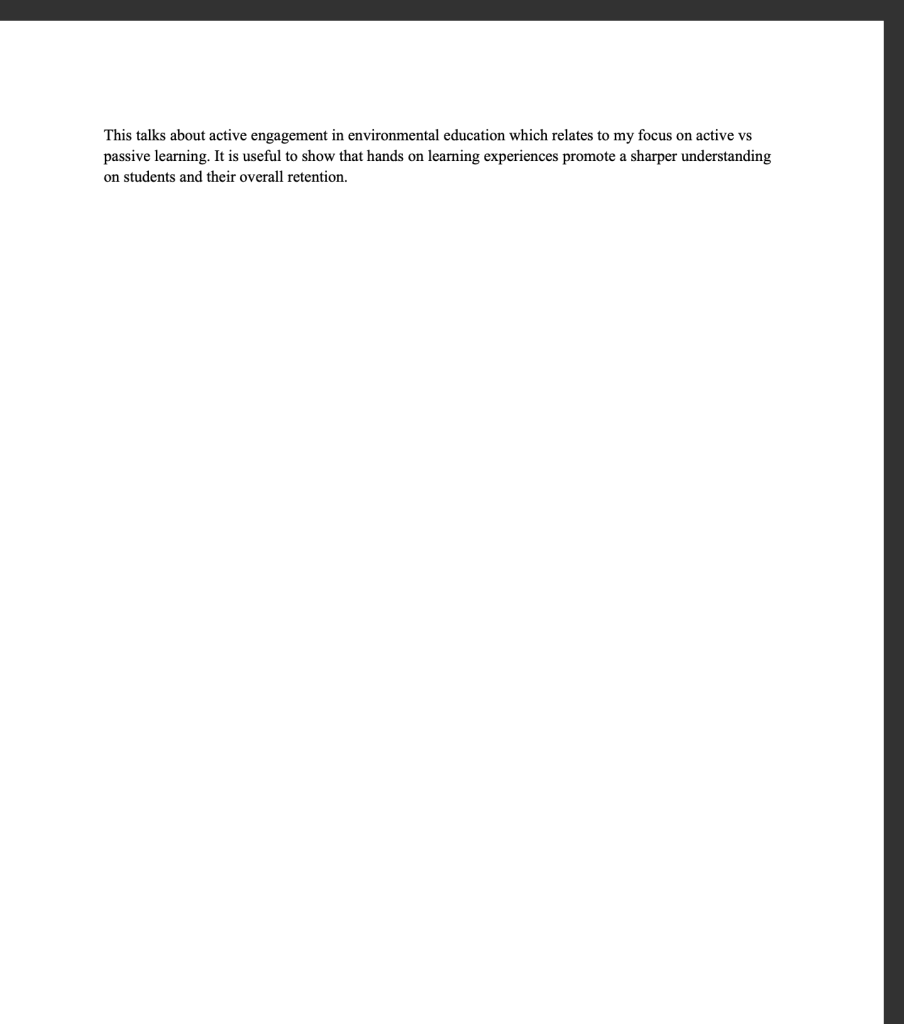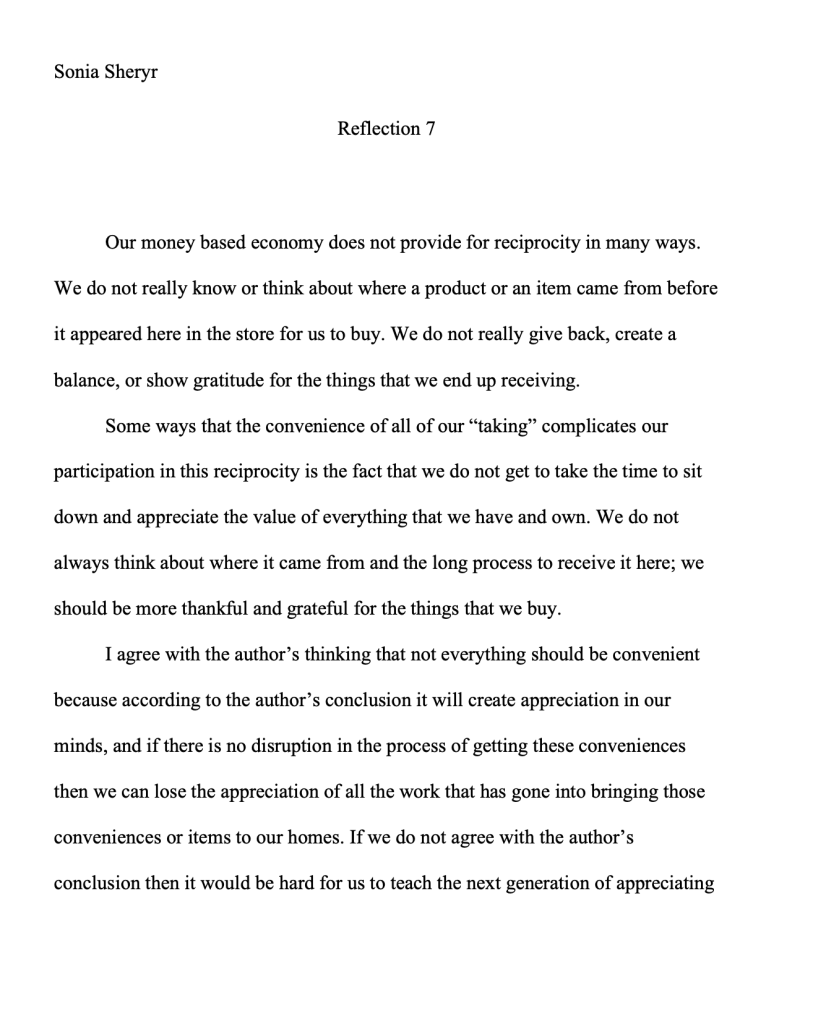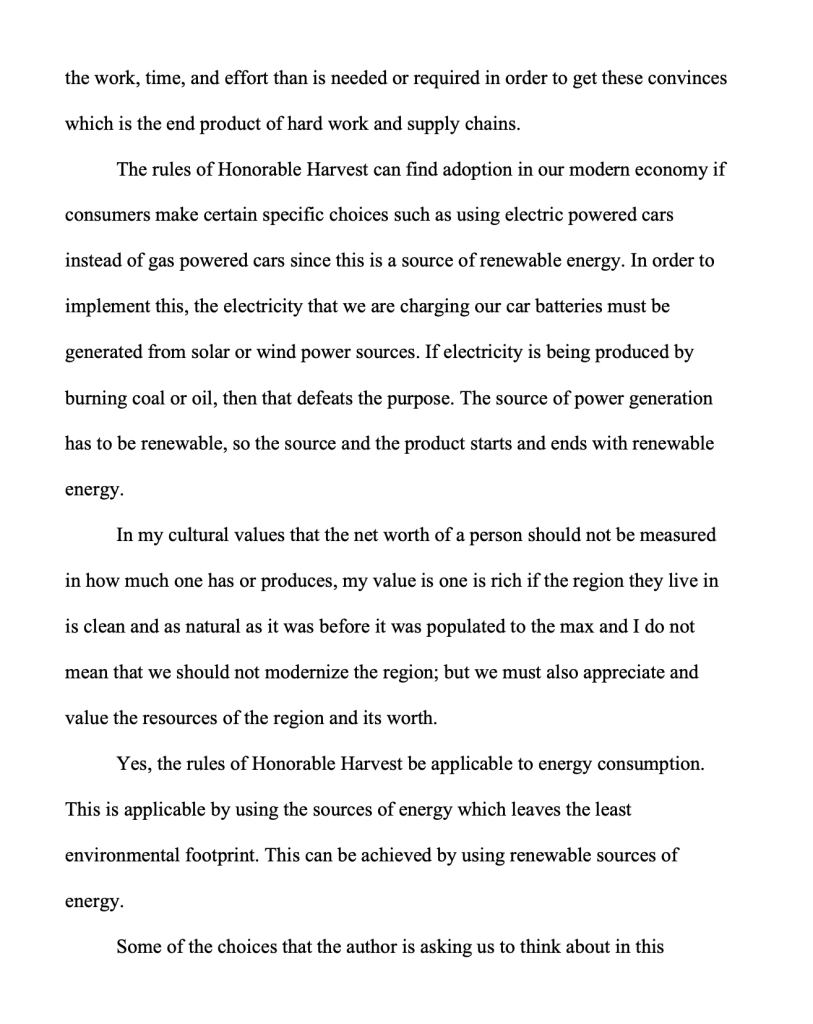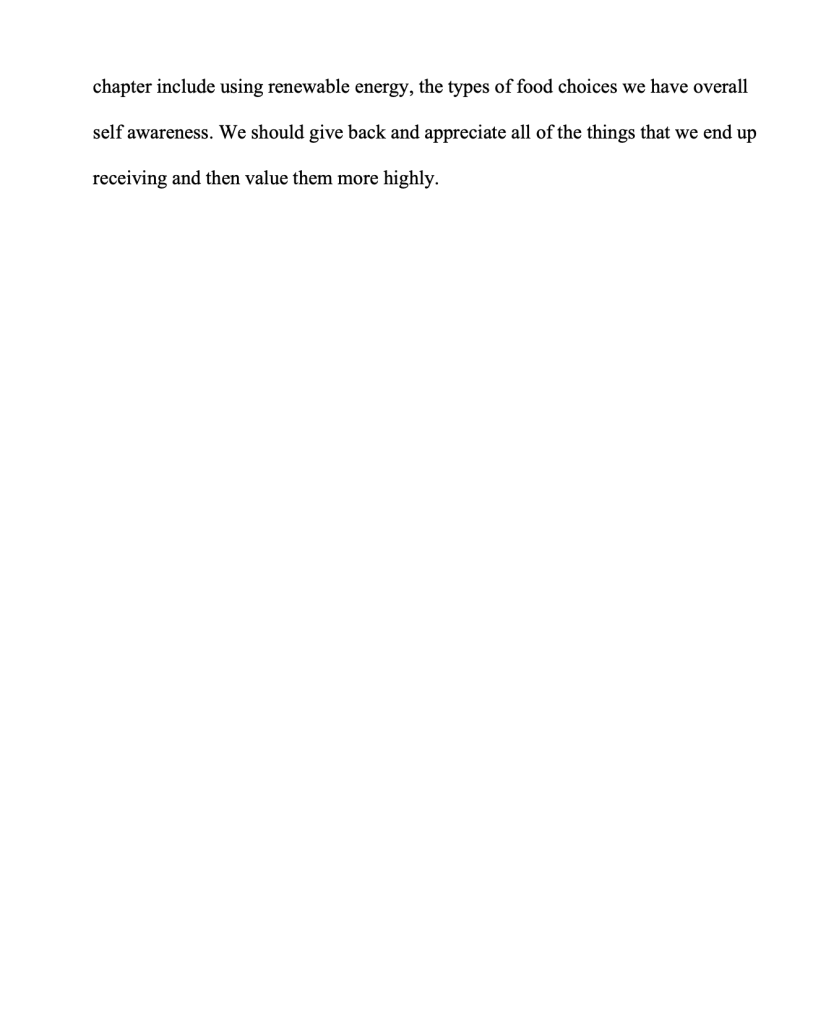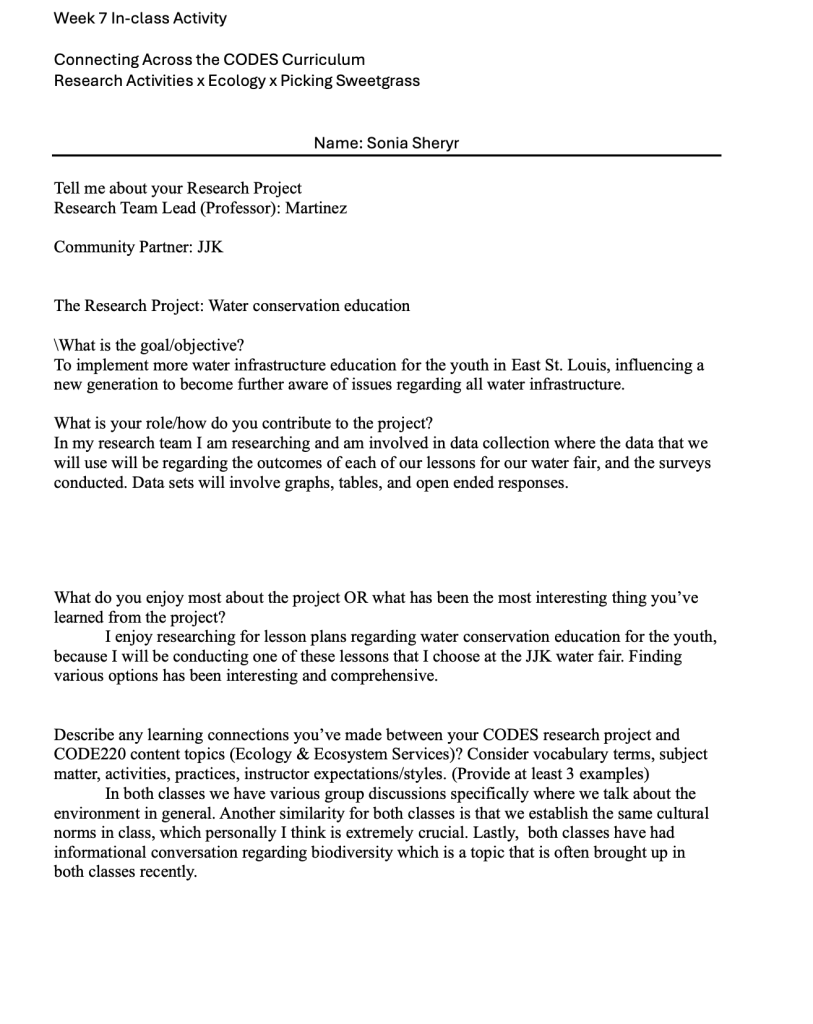5. Proposed Experiment
Our research question is “How do passive vs active learning strategies affect student engagement on water conservation education. The independent variable will be the type of lesson strategy used, such as the active learning lesson. While the dependent variable will in this case be student engagement and performance which will be measured through a method called active recall. The control is going to be a group that undergoes passive learning lessons like a notes powerpoint.
Some children learn best by listening to their teacher, while others require hands-on experience, and still others benefit from a visual example provided by an instructor. For the last type, some plans include videos of instructors demonstrating rainwater runoff. This is why we need to be open to finding a lesson that is easy to understand, comprehensive, interactive, and engaging.
A lesson that I conducted at the Jackie Joyner Kersee Food Agriculture and Innovation Center is that students will be provided with 3 cups. Cup A will contain clean water. The water will be poured into Cup B. Cup B will contain soil on top and one other object at the bottom (such as leaves, tin foil, wood chips, etc). Cup B and the object will both contain a hole. The water that is poured into Cup B from Cup A will run into Cup C. The students will observe the amount of water in Cup C and the color of the water in Cup C.
First, we will demonstrate the experiment with Cup B, which contains only soil at the bottom and requires two scoops of soil. Then we will fill Cup A a third to halfway with water. Then, dump the water from Cup A into Cup B. Then, observe what comes out of the bottom into Cup C. The water that comes out is called run-off. This ultimately flows into Cup C. Discuss the amount and color of the water with the students. Observe the amount and color of the water. Now, you will redo the experiment, but place different objects at the bottom of your Cup B that will act as obstructions, such as tinfoil or a sponge. What do we predict will happen, and then observe the runoff?
Then we all come together and discuss our observations and results regarding which object had the most and least run-off, and which run-off was the darkest. This shows how water moves through a system and changes along the way. How different objects affect the amount of water and the quality of water in a system, and if water can’t be taken into the soil, it can go through various routes of the water cycle.
This lesson plan will serve as our method of teaching for the experimental group. For the control group, we will use a slideshow presentation to teach the students with a “passive learning strategy”. The slideshow presentation will contain the same information on the topic presented in the hands-on activity. There will be bullet points to highlight key points in the lesson and pictures to show exactly how water runoff works. We will act as instructors for this group, going into an in-depth lecture on water runoff while making sure to stick to the layout of the presentation.
Throughout each section, we will measure the students’ engagement through the frequency of questions brought up in class. Performance will be measured using the results of quizzes taken at the end of the lesson. Both results will be compared in order to determine which learning method impacted the average student the most. However, it is always possible that one method could positively impact engagement, while the other positively impacts performance. In this instance, the argument could be made that a mix of both strategies would be most effective in maximizing both engagement and performance.
